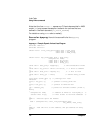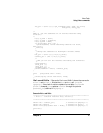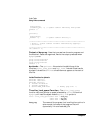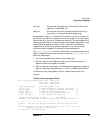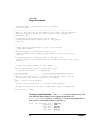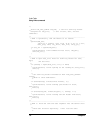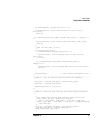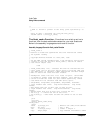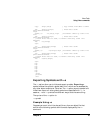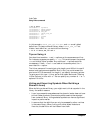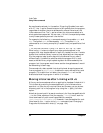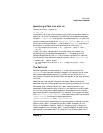
78 Chapter 3
Linker Tasks
Using Linker commands
/*
-----------------------------------------------------------------
* STEP 6: Return a pointer to the entry point specified by -e:
*/
entry_pt_addr = (unsigned int) aux_hdr.exec_entry;
return ((void *) entry_pt_addr);
}
The flush_cache Function . Since there is no existing routine to
flush text from the data cache before execution, you must create one.
Below is the assembly language source for such a function.
Assembly Language Source for flush_cache Function
; flush_cache.s
;
; Routine to flush and synchronize data and instruction caches
; for dynamic loading
;
; Copyright Hewlett-Packard Co. 1985,1991, 1995
;
; All HP VARs and HP customers have a non-exclusive royalty-free
; license to copy and use this flush_cashe() routine in source
; code and/or object code.
.code
; flush_cache(addr, len) - executes FDC and FIC instructions for
; every cache line in the text region given by starting addr and
; len. When done, it executes a SYNC instruction and then enough
; NOPs to assure the cache has been flushed.
;
; Assumption: Cache line size is at least 16 bytes. Seven NOPs
; is enough to assure cache has been flushed. This routine is
; called to flush the cache for just-loaded dynamically linked
; code which will be executed from SR5 (data) space.
; %arg0=GR26, %arg1=GR25, %arg2=GR24, %arg3=GR23, %sr0=SR0.
; loop1 flushes data cache. arg0 holds address. arg1 holds
offset.
; SR=0 means that SID of data area is used for fdc.
; loop2 flushes inst cache. arg2 holds address. arg3 holds
offset.
; SR=sr0 means that SID of data area is used for fic.
; fdc x(0,y) -> 0 means use SID of data area.
; fic x(%sr0,y) -> SR0 means use SR0 SID (which is set to data
area).
.proc
.callinfo
.export flush_cache,entry
flush_cache
.enter
ldsid (0,%arg0),%r1 ; Extract SID (SR5) from address
mtsp %r1,%sr0 ; SID -> SR0
ldo -1(%arg1),%arg1 ; offset = length -1
copy %arg0,%arg2 ; Copy address from GR26 to GR24



